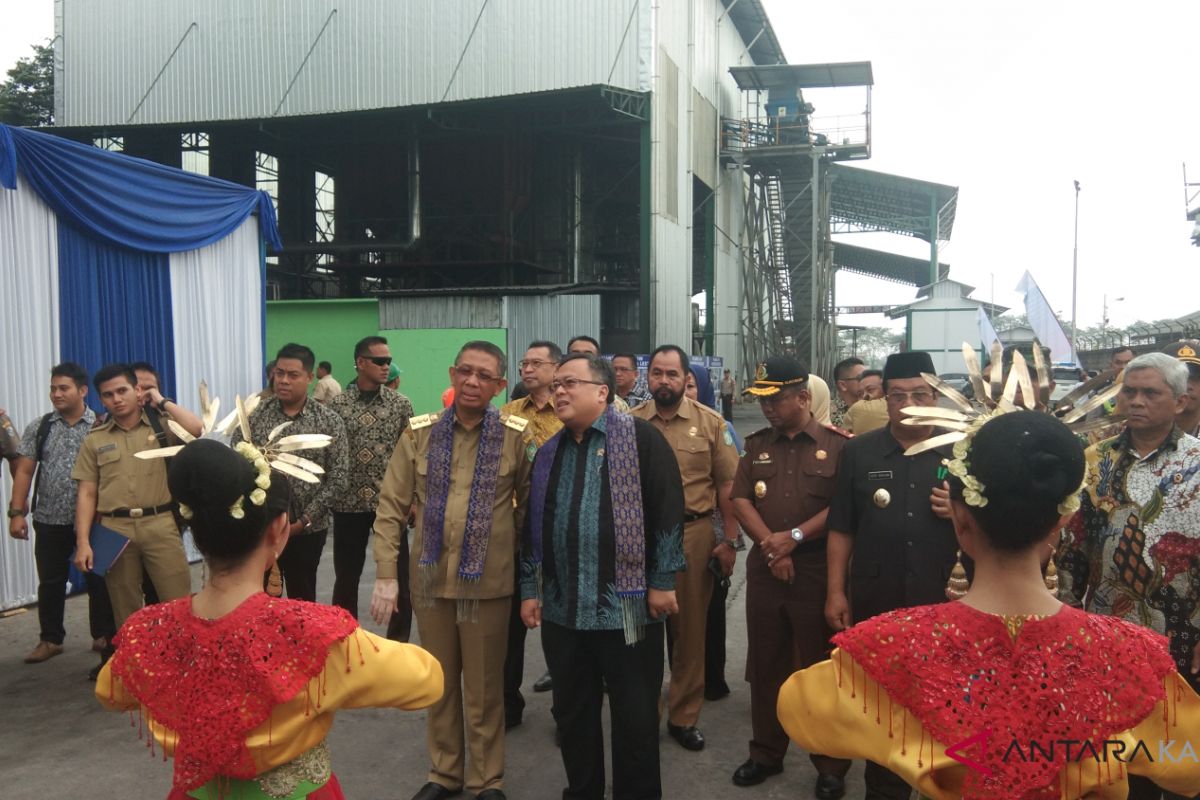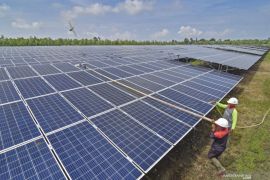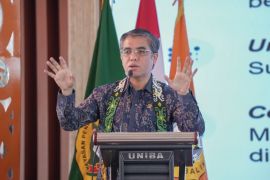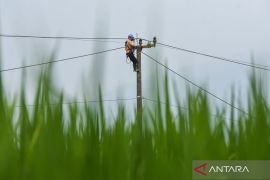Of this ambitious target, 75 percent, or 75 GW, will come from new and renewable energy sources, such as hydro, geothermal, bioenergy, solar, and wind.
The energy transition target is also a part of Indonesia's commitment to reducing carbon emissions by slowly phasing out fossil fuel power plants, especially coal-fired steam power plants (PLTU), and switching to renewable energy.
Based on the National Energy Council (DEN) data, the highest share of the energy mix in 2023 for electricity was still dominated by fossil fuels from coal-fired power plants at 40.46 percent, while that of new renewable energy was only 13.09 percent.
However, some stakeholders have expressed concerns over the government's plan to boost new renewable energy, especially the development of monoculture-based bioenergy, which has the potential to decimate the remaining forests.
One of the target areas for bioenergy development, especially the biomass power plant (PLTBm) type, which is referred to as new coal from forests, is West Kalimantan province.
Biomass power plant
Trend Asia researcher Amalya Oktaviani recently said that as per the 2021–2030 Electricity Supply Business Plan (RUPTL) document, nine new biomass power plants will be built in West Kalimantan, with capacities ranging from 2 MW to 10 MW.
One such power plant is the Siantan PLTBm, which began operating on April 23, 2018, with a capacity of 15 MW. The power plant is located in Wajok Hulu village, Siantan district, Mempawah Regency.
The independent power producer uses gasification technology—a water tube type boiler with fuel derived from palm shells and wood, rice husks, corn cobs, sugar cane pulp, sawdust, and other agricultural waste.
So far, four biomass power plants have become operational in West Kalimantan while nine new power plants are planned.
However, continuing the operation of these biomass power plants could potentially sacrifice forests as a source of fuel. National projections require an area of 2.3 million hectares of energy plantation forests to supply biomass.
In West Kalimantan, three companies are currently developing biomass energy plants: PT Hutan Ketapang Industri on an area of 13,405 hectares, PT Muara Sungai Landak on an area of 8,782 hectares, and PT Gambaru Selaras Alam on an area of 1,338 hectares.
Director of the Borneo Advocacy and Research Circle (Link-Ar Borneo), Ahmad Syukri, has voiced concerns about the future of the West Kalimantan forest, which is the target of a bioenergy-based renewable energy project.
According to him, West Kalimantan has 8.3 million hectares of forest area, 53 percent of which comprises production forests, which could potentially be handed over to corporations to develop energy plantation forests.
According to the Directorate General of Sustainable Production Forest Management of the Ministry of Environment and Forestry, based on a ministerial decree, the utilization of production forests in West Kalimantan in 2020 stood at 74 units, spanning an area of approximately 3 million hectares.
Solar barn
West Kalimantan, which is located on the Equator, is one of the barns of renewable energy, especially solar thermal power, which can be developed to meet local and national needs.
Data from the Ministry of Energy and Mineral Resources shows that the potential for renewable energy in West Kalimantan is 25.5 GW, with solar energy potential alone pegged at 20.11 GW.
A solar energy expert from Tanjung Pura University, Prof. Yusuf Ismail, highlighted the enormous potential of solar power in the province—which can be tapped as part of efforts to achieve zero carbon emissions while boosting the regional economy.
The potential for solar energy is supported by the strength of solar radiation in West Kalimantan.
Ismail said that compared to developing biomass, which threatens forest sustainability, solar power is considered to be a more feasible renewable energy source in the Kalimantan region.
However, on a large scale, solar power plants (PLTS) also require quite a large area of land, so the potential generators to be developed will be isolated, he added.
Although the potential is quite large, he said, research to ensure the reliability, sustainability, and economic aspects of solar power still needs to be developed.
At the Tanjung Pura University in Pontianak city, a 1.5 MWp solar power plant has been built, which is the largest renewable energy generator in the educational sector in Indonesia.
Pontianak city, which lies on the Equator, has higher solar intensity at around 3.96 to 4.90 kWh / m2 per day.
The solar power plant at the university is estimated to produce 1,786,980 kWh of electrical energy per year, and is expected to serve as an example of utilizing solar energy potential on the island of Kalimantan.
The project is expected to increase the penetration rate of new renewable energy in Indonesia, in accordance with the government's 23 percent energy mix target, which it aims to achieve by 2025.
Just transition
The development of new renewable energy potential of 3,692 GW to support the energy transition is also a priority of the National Innovation Research Agency (BRIN).
Head of the BRIN's Energy and Manufacturing Research Organization, Cuk Supriyadi Ali Nandar, said that the energy transition cannot be separated from efforts to cut carbon emissions.
The energy transition requires large capital. Its main goal is to slow down the rate of global warming to save life on Earth, including humans.
Indonesia has ratified the Paris Agreement and is committed to meeting the Nationally Determined Contributions (NDC) with the target of reducing emissions by 2030 by 29 percent with its own efforts and 41 percent with international assistance.
Nandar said that the development of biomass energy, in principle, aims to not disturb existing forests but optimize marginal land, critical land, and unused land.
If a coal-fired power plant is immediately turned off, the costs would be very high, so a co-firing pattern with biomass can be temporarily pursued, he added.
However, according to him, if biomass is built on a large scale, it would threaten forests and complicate emissions reductions from the forestry sector.
Therefore, Link-AR Borneo director Ahmad Syukri said that a just energy transition is the best path that the government can take by implementing four pillars of justice.
First, recognition justice, which involves recognizing the existence of vulnerable communities, and recognizing their vulnerability and differences in rights and needs.
Programs implemented for the energy transition should not increase cases of land grabbing, which would automatically stoke land conflicts, he explained.
Second, distributive justice, which refers to ensuring a fair and equitable distribution of benefits and reducing the distribution of burdens and risks to communities most affected by the energy transition program.
Third, procedural justice, which involves guaranteeing, fulfilling, and providing protection for everyone to participate meaningfully in every policy related to the energy transition.
Finally, restorative justice, which is an effort to protect communities from dangerous activities and restore them to their original state.
Related news: Prabowo urges G20 to intensify climate action
Related news: Indonesia has potential to transition fully to green energy: Prabowo
Editor: Azis Kurmala
Copyright © ANTARA 2024












